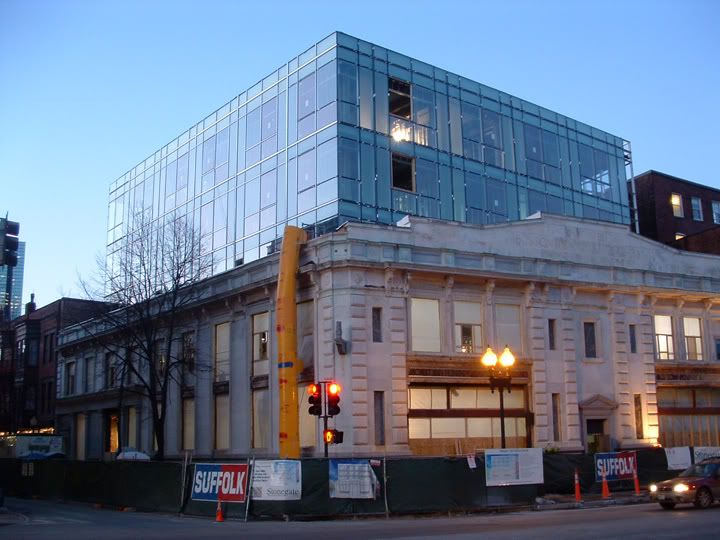from Business Week:
February 26, 2007, 12:00AM EST
Bohemian Today, High-Rent Tomorrow
Creative types are essential to urban and regional economic growth. Here's why?and the cities artists should flock to now
by Maya Roney
Want to know where a great place to invest in real estate will be five or 10 years from now? Look at where artists are living now.
Sociologists and policymakers have long been touting art and culture as the cure-all to economically depressed neighborhoods, cities, and regions. The reason? It has been proven that artists?defined as self-employed visual artists, actors, musicians, writers, etc.?can stimulate local economies in a number of ways.
Artists are often an early sign of neighborhood gentrification. "Artists are the advance guard of what's hip and cool," says Bert Sperling, founder and president of Portland (Ore.)-based Sperling's Best Places and compiler of BusinessWeek.com's list of the Best Places for Artists in America.
Creativity Leads to Growth
Artists, because of their typically lower incomes, usually need to seek out less expensive, developing neighborhoods where they can afford the rent. But because of their creativity they are able to fix up these areas, eventually attracting hip boutiques, galleries, and restaurants. Not all artists are starving. While some are able to achieve success writing, acting, painting, or dancing, others get tired of scraping by as waiters or bartenders and sometimes apply their abilities in more entrepreneurial ways.
Anne Markusen, an economist and professor at the University of Minnesota's Humphrey Institute of Public Affairs and a leading researcher on the effects of the arts on regional economics, once profiled an abstract painter whose work is now displayed on ceilings and in MRI machines in hospitals across the country. In Markusen's research, artists have also been found to stimulate innovation on the part of their suppliers. A painter may need a certain type of frame that is not manufactured, forcing the frame maker to create a new design that happens to also work well for other artists.
But Markusen also maintains that artists bring more than culture to a community. "Businesses don't often understand the extent to which art affects them," Markusen says. "[Artists] are just as important as science and technology companies."
Nonarts businesses also use artist contractors to improve product design, help with marketing, or even use dramatic theory to solve employee relationship issues. Being a cultural center also helps local businesses attract employees who want to be able to regularly go to the ballet or the theater, hear authors read from their latest books, or attend art gallery openings.
Follow the Money
Due to the individual nature and economics of their work, artists are also some of the most itinerant professionals out there. When relocating, they often look for cities and towns that already have high concentrations of artists and a young, racially and ethnically diverse population. The presence of a nurturing art community in the form of art societies and centers is also essential, especially to young artists.
A low cost of living is important, but many artists make financial sacrifices to live near an art-rich urban center or live in a cheaper neighborhood. Few struggling artists can afford to live in neighborhoods like New York's SoHo and Greenwich Village, or even Williamsburg, which once were artistic havens before attracting wealthier residents. Now you are more likely to find New York-based artists in the Bronx, Brooklyn, or even Philadelphia.
In addition to the presence of like-minded individuals, proximity to wealth is also important. The fact of the matter is that artists can seldom earn a living, let alone become rich, selling to other artists. They need wealthy benefactors to buy their paintings or support their local symphony, which explains why each of the places in the U.S. that we found to be the best for artists are in or located near centers of wealth. Los Angeles, No. 1 on our list, is most commonly associated with the film industry. While the city provides great opportunities for actors and directors, there are equally rich prospects for musicians, artists, writers, and dancers. Of course, the majority of these people can't afford to live in Beverly Hills?at least not until they get their big break?and instead opt for more affordable digs in areas like Echo Park.
Where to Go Now
BusinessWeek.com and Sperling's Best Places came up with a list of the best places for artists in the U.S. by identifying the metro areas that have the highest concentrations of artistic establishments. We also looked at the percentage of young people age 25 to 34, population diversity, and concentration of museums, philharmonic orchestras, dance companies, theater troupes, library resources, and college arts programs. Lower cost of living played a part in the selection of some cities but had to be overlooked in others because of other very favorable factors.
Some of the top ten are traditional art "super cities"?one of the reasons Los Angeles leads the list is because it has 56 artistic establishments for every 100,000 people, a diversity index of 84.2, and an arts and culture index of 100 (on a scale of 1 to 100). New York City and San Francisco are also in the top ten. Other places are midsize cities, like hippie havens Santa Fe and Boulder, and country-music nucleus Nashville. Smaller, less-obvious additions include Carson City, Nev., which ranks third for its high concentration of art establishments, and the city of Kingston in New York's Hudson River Valley.
Ready to quit your day job and make art your profession? These metro areas are good places to start. And with all the economic benefits you'll be providing, they should welcome you with open arms.
Boston didn't make the top ten...



